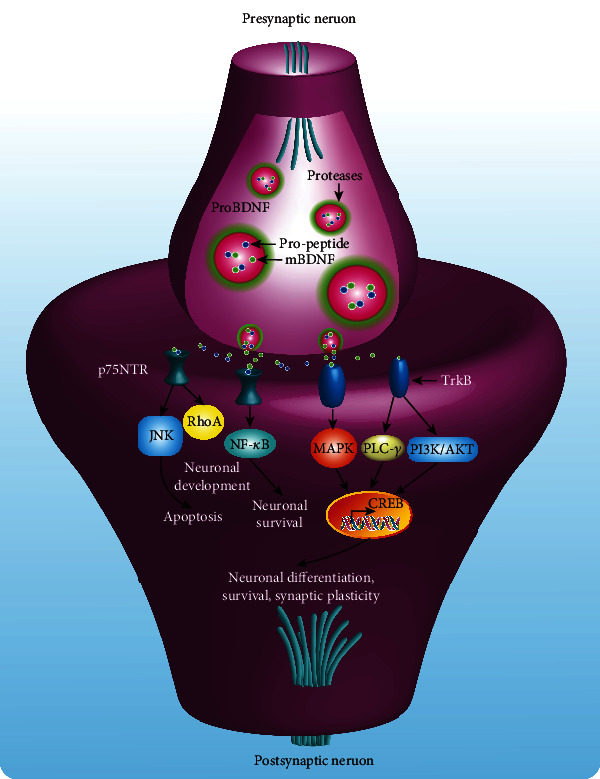Figure 5.

The key role of BDNF in the regulation of neuronal cell death and survival. Pre-proBDNF undergoes processing and cleavage to generate proBDNF, which is further processed to mature BDNF (mBDNF). Both proBDNF and mBDNF are stored in the proteases. ProBDNF undergoes low levels of constitutive release, while mBDNF associated with synaptic plasticity is released in an activity-dependent manner. Then, the signaling cascades are activated by the interaction of BDNF isoforms with the cell receptors located on the membrane of postsynaptic neurons, including the p75 neurotrophin receptor (p75NTR) and tropomyosin receptor kinase B (TrkB) receptor. Among them, proBDNF has a greater affinity with the p75NTR and forms the proBDNF/p75/sortilin complex, which leads to the activation of c-Jun N-terminal kinase (JNK), Ras homolog gene family member (RhoA), and nuclear factor kappa B (NF-κB) signaling pathways, subsequently induces apoptosis, neuronal growth and development, and neuronal survival, respectively. In addition, mBDNF binds with TrbB and forms the mBDNF/TrkB receptor complex, which activates the following signaling pathways, including mitogen-activated protein kinase (MAPK), phosphatidylinositol 3-kinase/protein kinase B (PI3K/Akt), and phospholipase C-γ (PLC-γ). Then, the transcription factor cAMP response element-binding protein (CREB) and transcription of genes are activated. Gene modulation induces neuronal differentiation, survival, and synaptic plasticity.
